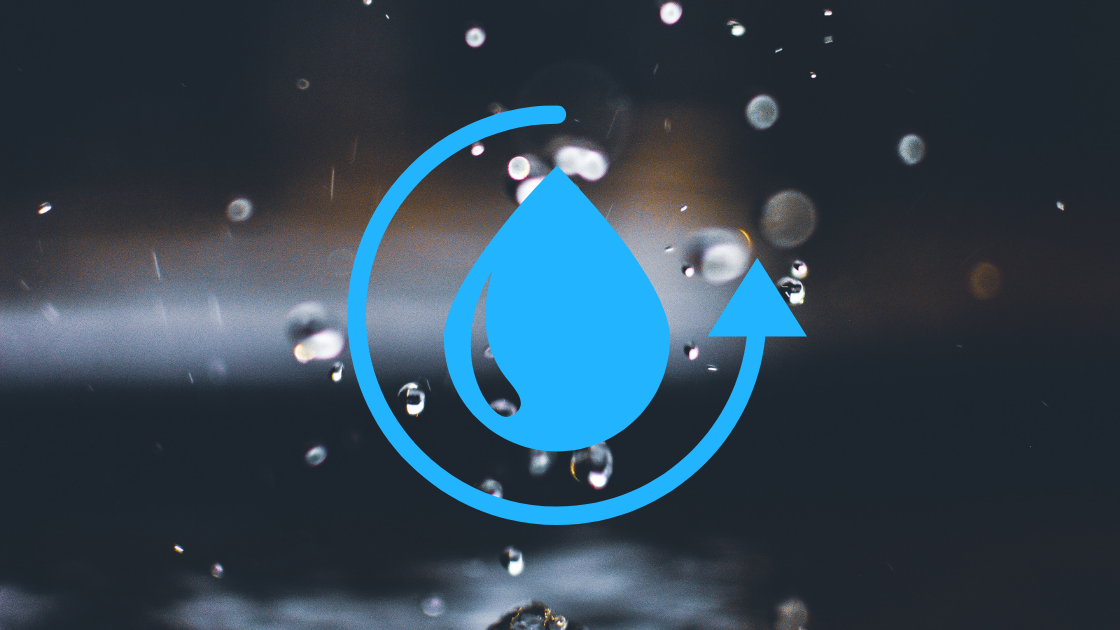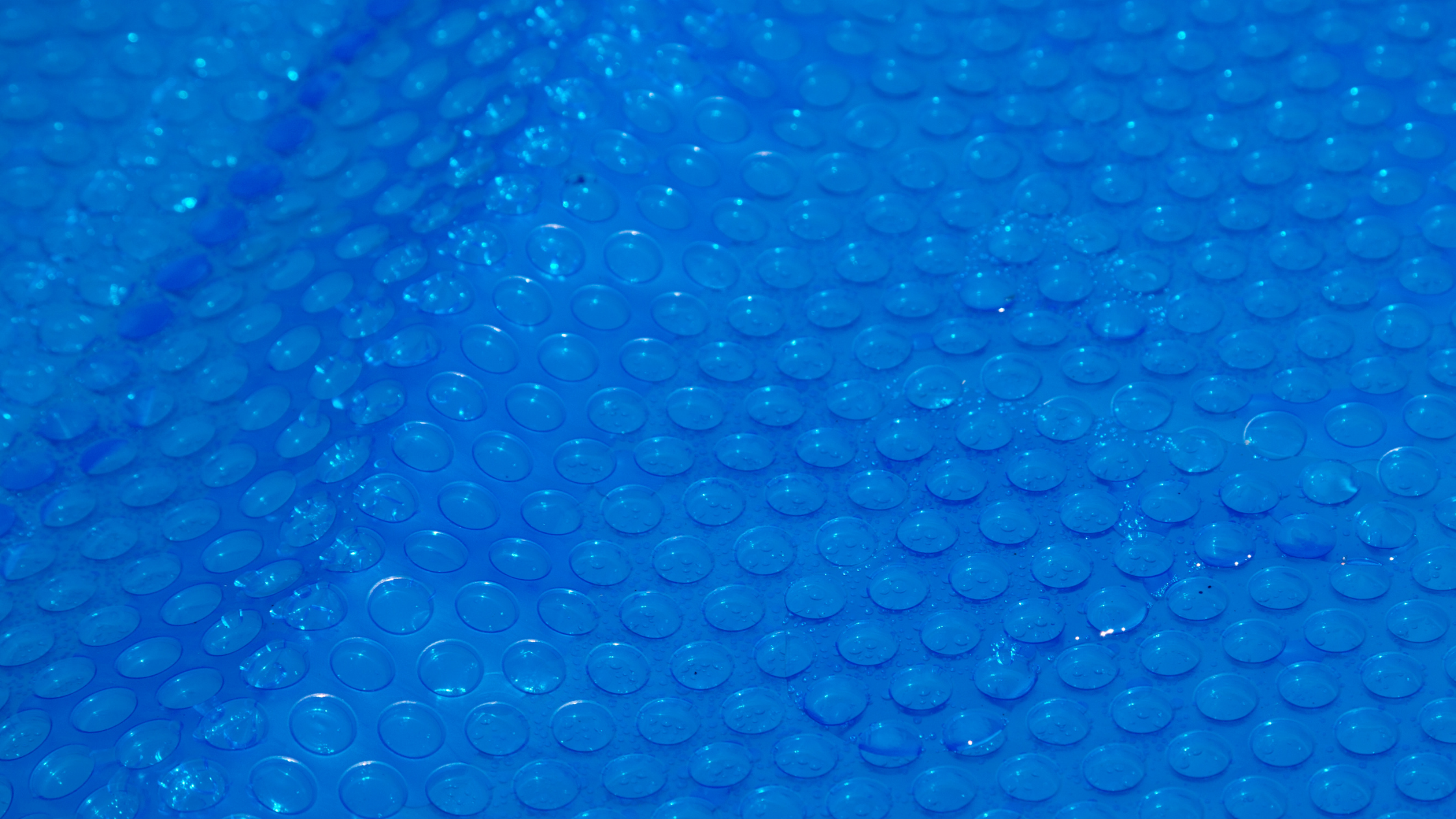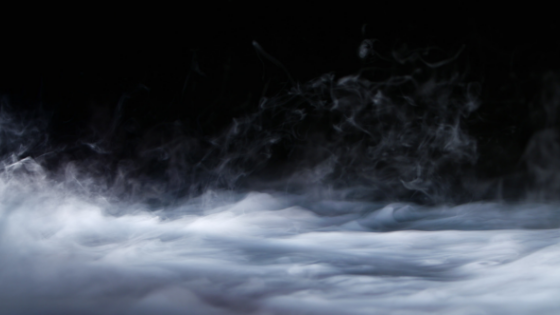Evaporation, Condensation, and Dew Point
Indoor swimming pools evaporate approximately their entire volume of water each year. And because every action has an equal and opposite reaction, evaporation means there will also be condensation. This article will discuss evaporation, condensation, and dew point temperature.
Covered in this article:
- The natural water cycle
- Evaporation and humidity
- What increases swimming pool evaporation?
- Condensation and dew point
- Conclusion
The natural water cycle
This simplified diagram of the earth's water cycle shows evaporation, condensation, precipitation, and collection:

Source: TheWeek
For indoor swimming pools, a similar cycle occurs, except the precipitation and collection occur in the pool dehumidification system, and the water is discarded, and the pool is refilled with tap water.
Water evaporates, then eventually condenses. In the case of a pool dehumidifier, this is mechanically accomplished using refrigerated coils). These coils precipitate the condensation into a collection tray, which is then discarded. We, however, believe this water can and should be returned to the swimming pool's circulation, upstream of the filtration and sanitization system. After all, this condensed water vapor is distilled water. It is about as pure and clean as water gets.
Related: Dehumidification Problems in Natatoriums
Evaporation and Humidity
While these phenomena occur in nature, let's focus on an indoor swimming pool as the example. Evaporation is the natural conversation of water into vapor, below the boiling temperature.1 It takes energy for water to evaporate, and that energy manifests itself as heat. So evaporation actually coincides with heat loss from the water (evaporative cooling). This phenomenon also occurs on our skin when it gets wet. When water (or sweat) evaporates from our skin, it cools us down.
Water evaporates and becomes water vapor, or moisture. This vapor goes into the air, and increases the humidity in the natatorium. Humidity is a measurement of the amount of moisture in the air. Absolute humidity is the amount of moisture in the air at a given temperature. Left alone without dehumidification, at some point, the air will become 100% saturated with water vapor and condense back into water. The percentage of water vapor in the air relative to how much the air can hold (at a given temperature) is called Relative Humidity (RH).
Heat and humidity both rise an expand. In a natatorium, that means the air up by the ceiling is the hottest and most saturated with moisture. This is why it makes sense to have a medium and/or high level return vent. In traditional natatorium design, this is also why many natatoriums have ceiling exhausts, because it throws out the most humid air in the room. From a dehumidification standpoint, ceiling exhausts are a pretty good idea...but for indoor air quality for pools, they fail to remove chloramine pollution. Therefore, in our experience, ceiling exhausts in a natatorium are a mistake. At the very least, they are not helpful for reducing chloramines.
Related: Natatorium Design Resources
What increases swimming pool evaporation?
The formula for evaporation can be found in the ASHRAE design handbook, section 62.1. Don't worry, unless you're an engineer designing pool dehumidification systems, you don't need to know the math. The important thing here is there are several factors that impact the evaporation rate of a swimming pool.
 Source: ASHRAE Handbook §62.1, Page 6.5
Source: ASHRAE Handbook §62.1, Page 6.5
Swimming pools evaporate a lot of water. Outdoor pools can evaporate as much as their entire pool volume in a given year, especially in dry, hot climates like Arizona. What most people are surprised to hear–because we certainly were–is that indoor pools evaporate approximately their entire volume in a year too. That's correct, not a misprint. Engineers can do an evaporation load calculation, which can be converted to gallons or liters. The amount of water a properly-dehumidified pool loses to evaporation will be about the volume of the pool each year. Crazy, right?
There are factors that impact the amount of evaporation.
Low relative humidity = more evaporation
The reason outdoor pools in Arizona evaporate faster than in Houston is not because of air temperature–both Houston and Arizona get really hot–it has to do with humidity. Houston is a very humid place in the summertime, so its air is already more saturated with water vapor than the dry, arid Arizona desert. Evaporation occurs much faster in the dry climate because of its lower relative humidity.
The same principles apply to indoor swimming pools. If relative humidity is kept too low (say, below the recommended 50-60% RH), evaporation increases. This means more moisture in the air for the dehumidifier to remove.
Colder air temperature (relative to water temperature) = more evaporation
Contrary to what you might think, colder air actually can lead to more evaporation than hotter air in a controlled environment. Again, the amount of moisture in the air matters, but so too does the temperature of the pool water itself. When the pool is warmer than the air above it, evaporation rates increase, and sometimes the increase is drastic. We heard from an engineer years ago (but cannot find the source right now) that every ºC the air temperature is lower than the pool temperature, the evaporation rate increases 7%. That may seem small, until the air is 3 or 4º colder than the pool, and you have 21-28% more evaporation than the dehumidifier was designed to handle.
Related: Keep the Natatorium Doors Closed
The optimal air temperature for an indoor pool is 2ºF above the water temperature, up until about 90ºF, depending on who you ask. Most dehumidification experts we have spoken with agree that 88-90ºF is about as hot as you should allow a natatorium to be.
Air movement over water = more evaporation
ASHRAE §62.1 says air velocity moving over the water should be ideally 30 feet-per-minute (FPM). Air velocity moving across the water should never exceed 50 FPM. As this excerpt from the ASHRAE handbook shows, the difference in evaporation is substantial:
Remember the earlier evaporative cooling example of sweat or water on our skin that cools us down? Have you ever noticed how much colder you are when the wind blows? If you jump out of a pool and the wind picks up, it could be a 90ºF day and you could actually get cold until you dry off. Why? Because air movement over water increases evaporation,and evaporation cools."Supply air should be directed against envelope surfaces prone to condensation (glass and doors). Air movement over the pool water surface must not exceed 30 fpm (as per the evaporation rate wp in Equation [2]). If air movement over the water surface is increased from the standard 30 fpm to 125 fpm, the evaporation will increase by approximately 30%. Air that moves across the water surface is best handled by a source-capture-type exhaust system. Evaporation from the water surface should be evaluated using Equation (2)." - ASHRAE §62.1, Page 6.6
Condensation and Dew Point
Condensation is when water vapor changes state from gas to liquid. Condensation occurs when the relative humidity (RH) reaches 100%, and water precipitates out of the air. Condensation and precipitation reduce RH, which is why dehumidification works to control RH in a natatorium. Fortunately, pool dehumidifiers are able to control when and where RH reaches 100%, because they can control the dew point temperature. The Dew Point is the temperature where water vapor condenses back into water. RH at the dew point is 100%.
A pool dehumidifier makes sure the ambient conditions in the natatorium do not allow condensation to occur. They create a 50-60% RH in the natatorium space, and they wash windows with warm, conditioned supply air so prevent condensation on the glass.
As an aside, outside window glass needs to be washed because the glass has the least amount of insulation to the outside. So in the cold months, the glass is often colder than the dew point, so moisture would condense on it easily, just like moisture condenses on a cold beer on a hot summer day.

The dehumidifier has a coil that has cold refrigerant in it. Because it is so cold, it is below the dew point. So when warm, humid air flows through the coil, the moisture in the air condenses and drips down into a collection tray (precipitation). This water is distilled, so it contains no minerals or other dissolved solids. As mentioned earlier, it would complete the water cycle to recycle this distilled water back into the swimming pool circulation system before the filtration and sanitization systems. We'll push for that with local and state codes, but for now, most states do not allow it (for some undefined reason).
Conclusion
So that's evaporation, humidity, condensation, and dew point in a nutshell. We are not professional engineers, so we do not perform moisture load calculations for sizing dehumidifiers. Fortunately, mechanical engineers do, and they have the pick of some great pool dehumidifier manufacturers to help them with the task. As complicated as it may seem, these companies have it down to a science. Literally.
1 12.4: Evaporation and Condensation. Chemistry LibreTexts.

 By
By


